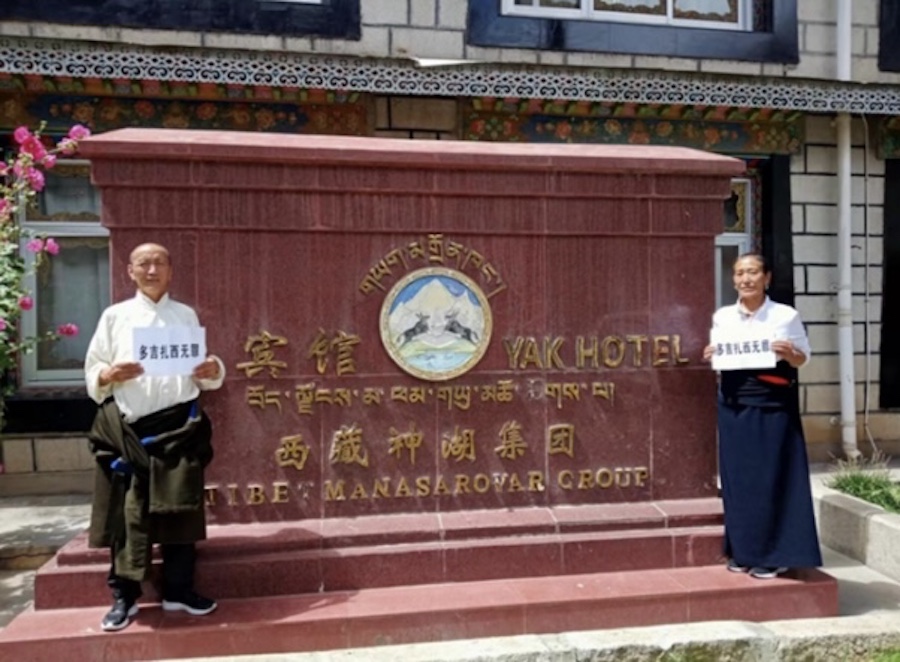By Seth Mydans
ELISTA, Russia – Landscaping, telemarketing, factory work, a job in a restaurant, a job as a customs inspector: “If I wrote down everything on my résumé, people probably wouldn’t hire me,” said Erdne Ombadykov, “because I’ve kept changing.”
If they only knew.
This pleasant young man from Colorado in the short-sleeved white shirt has been identified by the Dalai Lama of Tibet as the latest of many reincarnations of a Buddhist saint who lived in northern India 400 or 500 years ago.
On and off for about half of every year, Ombadykov spends time at what might be called his day job, as chief lama here in the republic of Kalmykia. It is his ancestral homeland, a piece of Russia that is the only predominantly Buddhist region in Europe.
He wears his reincarnation lightly. “I don’t make it a big deal,” he said the other day as he sat in his small, sunlit office. “I don’t say, ‘I’m the biggest saint, who was recognized by the Dalai Lama, la-la-la, la-la-la.'” He threw his arms into the air.
“We are all reincarnations,” he said. “As I see it, every human being and every animal is a reincarnation.”
An ethnic Kalmyk who was born in Philadelphia to immigrant parents, Ombadykov, 32, said he had always wanted to be a Buddhist monk, the way other boys want to be policemen or firemen.
He was sent at the age of 7 to study at a monastery in India, where his past identity was proclaimed by the Dalai Lama. He was given the name that has been handed down from one incarnation to another through the centuries, Telo Rinpoche.
“I don’t like to talk about it much because it’s a delicate subject,” he said. “It sounds strange, unusual to people who don’t have a good understanding of it.” He added: “Even if I am a reincarnation there’s nothing I can do about it. I’m still who I was, whether because of reincarnation or not.”
In Erie, Colorado, for the other half of his year, he is just another man on the street, supporting his wife and their 6-year-old son with what he calls “odds-and-ends jobs.”
His wife is an ethnic Tibetan and a Buddhist, which makes life easier. “She understands,” he said. “If I had married an American blonde she would probably leave me as soon as I came to Kalmykia.”
The first Telo Rinpoche was a revered hermit who meditated in caves near a river. He had special powers, Ombadykov said, and when he threw the bones of a fish back into the river, they came to life again.
The most recent of his predecessors was a prominent anti-Communist and a deputy prime minister in Mongolia who died in 1968, he said.
Ombadykov said he did not really feel their presence. But people who knew the latest Telo Rinpoche say they see similarities in the ways of thinking of the two men.
Mild as he is in his manner, his pedigree carries weight among the Buddhists in Kalmykia. “Am I as highly educated as the previous incarnation?” Ombadykov said. “Maybe not. But people respect me. They don’t see me as the new guy. They see me as the last guy.”
The discovery of Ombadykov was the product of a long search after the death of his predecessor, he said. But nothing in this life had prepared him for the role he was assigned.
After the collapse of the Soviet Union in 1991, the Dalai Lama dispatched him, at the age of just 19, to lead a Buddhist revival among the 160,000 Kalmyks who live here. Ethnically Mongol, they form a broken fragment of the ancient Mongol empire, embedded now in European Russia. Under Communist rule, their religion had been crushed and their temples destroyed.
Ombadykov knew nothing of Kalmykia’s history when he was dispatched to be its spiritual savior. He did not speak the language. He did not understand the culture. “I didn’t even know where the hell Kalmykia was,” he said. Once there, he found the Asian mentality of the Kalmyk people impenetrable, he said, and he reacted with the hot-headedness of youth. After just a year and a half he quit. “I said, ‘I’m outta here – forget the plan. I didn’t have anyone to talk to. We had nothing in common.”
In his despair he left the monkhood, an irreversible step that means he can never again wear the orange or red robes that had been the dream of his childhood. It did not bar him, though, from his role as the region’s Buddhist leader, and after two years of wandering he accepted the mission once again and returned in 1995. “I’m still stuck with the status of chief lama of Kalmykia,” he said.
Buddhism has indeed seen a revival since his return. He administers 27 temples and prayer houses in Kalmykia and oversees the work of seven Tibetan lamas. Perhaps most important for the future, he has dispatched dozens of new monks to India for the kind of training he had as a boy. One of them, he said, may some day replace him as the Buddhist leader of Kalmykia.









